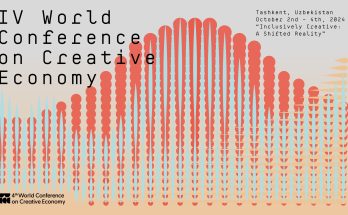
India’s greatest spiritual show, Kumbh Mela, has been declared Intangible Cultural Heritage of Humanity by UNESCO.The decision was taken at the 12th session by UNESCO’s Intergovernmental Committee for the Safeguarding of the Intangible Cultural Heritage in in Jeju, South Korea from 4-9 December.Previously ‘Yoga’ and ‘Nouroz’ were also included in the list.
Held in Allahabad, Haridwar, Ujjain and Nasik alternatively, this festival held every four years sees a massive gathering of pilgrims who participate in the ritual cleansing in the holy rivers in India. With its origins in Hindu mythology that tells how a few drops from a pitcher containing the nectar of immortality fell on the four locations across India during a fight between gods and demons, Kumbh Mela is the largest peaceful gathering of pilgrims.
“The element is compatible with existing international human rights instruments since people from all walks of life, without any discrimination participate in the festival with equal fervor. As a religious festival, the tolerance and inclusiveness that Kumbh Mela demonstrates are especially valuable for the contemporary world,” said a note from India’s Ministry of External Affairs.
Last held in 2013 in Allahabad, the 55-day event was attended by 100 million people, with a deployment of 12,000 police officers. The support structure included 35,000 temporary toilets, 14 medical centres, 22,000 street lights, 150 kilometres of temporary roads, 18 bridges, and new sewage facilities.
The Committee also took into consideration the valuable Indian tradition of the practice of the transfer of knowledge and skill from the teacher to the disciple in what is popularly known as the Guru-Shishyaparampara (teacher-student relationship) that forms a part of the Kumbh Mela.
“This intangible cultural heritage is constantly recreated by communities and groups in response to their environment, their interaction with nature and their history, and provides them with a sense of identity and continuity, thus promoting respect for cultural diversity and human creativity. It is not valued because it is unique but rather because it is relevant for the community practicing it. Furthermore, its importance is not in the cultural manifestation itself, but in the wealth of knowledge, know-how and skills that are transmitted from one generation to the next,” read the MEA note after UNESCO decision.
Other cultural heritages that found a place in the list are the art of Neapolitan pizza making, a horse-riding game from Iran and Dutch wind mills. Started in 2003 to raise awareness of the fading traditions, the UNESCO initiative also occasionally extends financial assistance to countries struggling to protect such heritages. The list already included more than 350 traditions, art forms and practices.
Author Profile
- India Writes Network (www.indiawrites.org) is an emerging think tank and a media-publishing company focused on international affairs & the India Story. Centre for Global India Insights is the research arm of India Writes Network. To subscribe to India and the World, write to editor@indiawrites.org. A venture of TGII Media Private Limited, a leading media, publishing and consultancy company, IWN has carved a niche for balanced and exhaustive reporting and analysis of international affairs. Eminent personalities, politicians, diplomats, authors, strategy gurus and news-makers have contributed to India Writes Network, as also “India and the World,” a magazine focused on global affairs.
Latest entries
 DiplomacyOctober 4, 2025UNGA Resolution 2758 Must Not Be Distorted, One-China Principle Brooks No Challenge
DiplomacyOctober 4, 2025UNGA Resolution 2758 Must Not Be Distorted, One-China Principle Brooks No Challenge India and the WorldJuly 26, 2025MPs, diplomats laud Operation Sindoor, call for national unity to combat Pakistan-sponsored terror
India and the WorldJuly 26, 2025MPs, diplomats laud Operation Sindoor, call for national unity to combat Pakistan-sponsored terror India and the WorldJuly 25, 2025When Fire Ends, Diplomacy Begins
India and the WorldJuly 25, 2025When Fire Ends, Diplomacy Begins India and the WorldJuly 16, 2025Operation Sindoor and its Aftermath: India’s Successful Diplomatic Outreach
India and the WorldJuly 16, 2025Operation Sindoor and its Aftermath: India’s Successful Diplomatic Outreach







